These 4 officials will now have a vote on the Fed committee that sets interest rates
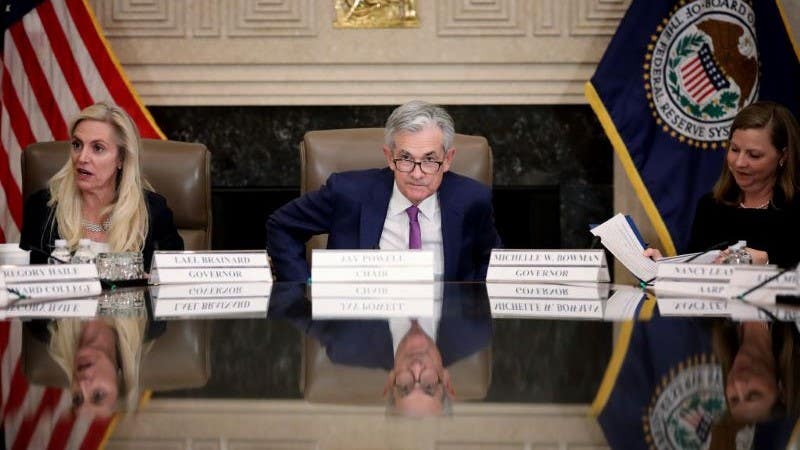
The Bankrate promise
At Bankrate we strive to help you make smarter financial decisions. While we adhere to strict , this post may contain references to products from our partners. Here's an explanation for .
For many Americans, the new year marks a time of transformation and reflection. It’s no different for the Federal Reserve.
With the calendar’s turn from 2019 to 2020, the U.S. central bank’s policy arm — the Federal Open Market Committee (FOMC) — welcomed in a new rotation of officials who will gain a formal vote on this year’s rate decisions. Joining the roster is one of the Fed’s most outspoken proponents of low interest rates, while two of last year’s dissenters are also departing from the voting panel.
Officials have a lot of lessons to take with them into the new year, with 2019 being one of the most dramatic Fed policy reversals in recent memory. The Fed cut interest rates by a quarter point at three-straight meetings as an act of insurance — the first such move since November 1998.
The committee’s reshuffling also follows a year of historic division, with officials voting against the majority at half of last year’s meetings. It marked the highest number of dissents under Chairman Jerome Powell’s tenure.
As the U.S. enters an election year, the Fed’s rate-setting arm appears committed to keeping interest rates steady over the next 12 months. Most experts say it’s going to be tough for the new voters to shift the tide, but the reshuffled committee could still influence policy.
“We’re likely to see a slightly more dovish-leaning committee this year,” says Sal Guatieri, senior economist and director of economic research at BMO Capital Markets, “largely because we’re losing two dissenters who opposed the rate cuts last year.”
Here’s who’s coming (and going) from the Fed’s voting seats in 2020, as well as last year’s lessons and themes that will guide them in the year ahead.
Rotating seats: 4 Fed officials getting a vote in 2020
The FOMC is made up of 12 officials from two groups: the Board of Governors in Washington, D.C., and the regional reserve bank presidents. All seven governors, including the chair and the vice chair, have a permanent vote, as does the president of the New York Fed, due to the prominence of its economic region.
On Thursday, President Trump said he intends to nominate Judy Shelton and Christopher Waller to fill the two current vacancies on the Fed’s seven-member board.
Fed watchers also group officials into two categories: hawks and doves. Doves prefer keeping rates low to keep the job market hot, while hawks fear that low interest rates could lead to financial stability risks or inflation.
1. Neel Kashkari
Among the four new voters this year is Minneapolis Fed President Neel Kashkari, who is one of the largest advocates for the current low-rate environment. He’s poised to continue carrying St. Louis Fed President Jim Bullard’s dovish torch, who won’t have a vote this year after steering the Fed toward its three cuts in 2019.
Since taking the helm at the regional Fed bank in January 2016, Kashkari has admitted that he’s been against all of the Fed’s nine total rate hikes since 2015 — mainly because inflation showed no signs of building.
“The Federal Reserve should err on the side of more accommodation to boost inflation expectations, to get inflation back to our 2 percent target,” Kashkari said during a November 2019 interview on CNBC.
The Fed’s patience with rate hikes has massive implications for the broader economy and U.S. consumers. If the Fed hikes prematurely, it runs the risk of slowing the economy more than necessary, hurting the job market and leaving many out of work for longer.
2. Robert Kaplan
Also joining the voting ranks is Dallas Fed President Robert Kaplan, who tends to find the middle ground. Kaplan was open to cutting rates last year, but said this month that he’s supportive of keeping interest rates steady through all of 2020.
Kaplan said on Wednesday that the Fed’s injections of liquidity into markets are leading to increased risk-taking by investors, and he’s hoping to find a way to slow the expansion of the Fed’s balance sheet in the near future.
3. Loretta Mester
Cleveland Fed President Loretta Mester is this year’s biggest hawk, but it looks like she’s aligning with her colleagues.
Mester spoke out against all of the Fed’s cuts last year but said in a November 2019 speech that rates are now “in a good spot.” That suggests she’s comfortable with where borrowing costs are and might not be in any hurry to start hiking again.
4. Patrick Harker
Philadelphia Fed President Patrick Harker is this year’s fourth new voter. The Fed official, who also disagreed with last year’s cuts, said in November that rates should stay put where they are.
Harker hasn’t dissented against the Fed during his helm at the U.S. central bank, which began in 2015.
These members will no longer have a vote in 2020
Leaders of the Kansas City and Boston Fed will be backing away from their permanent vote this year; both formally dissented against Powell during the July, September and October meetings’ cuts. Also rotating off is Chicago Fed President Charles Evans. All officials, however, will still attend meetings.
In the Fed’s December dot plot, which shows officials’ rate forecasts, 13 officials penciled in no rate moves through all of 2020, while only four saw the case for a quarter-point increase. After record division in 2019, it shows that officials’ viewpoints are starting to align.
But even if these new voters happen to dissent this year, they likely won’t sway the course of policy, if history serves as a guide. Fed governors haven’t dissented against the chair since 2005, according to the St. Louis Fed. New York Fed President John Williams has also sided with Powell. That means the chief central banker would likely have five people — and six votes total — on his side, if all four of these new faces were to vote against him.
Lessons from last year: Admit when you’re wrong, and you can’t tell the future
Last year’s Fed is going to be one for the history books. Few economists predicted that the Fed would cut rates after hiking them four times the prior year.
“The situation had changed, and the Fed’s policy needed to change,” Guatieri says. “No one expected back in December of 2018 that the situation would devolve as rapidly as it did.”
But while most of the attention was focused on the tit-for-tat trade war, at the heart of the rehearsal was a major realization at the Fed: unemployment can go much lower without feeding into inflation. That admission is going to be key for policy in 2020.
“The fact that unemployment has been lower and inflation hasn’t picked up very much, that’s a signal that there’s more capacity here than you might have thought,” says Bill English, finance professor at the Yale School of Management who served at the Fed for over 20 years.
It matters because it rejects an economic theory that’s been the bread-and-butter for Fed officials: the idea that inflation rises as unemployment falls. When everyone who wants a job can find one, employers start to raise wages to compete for more employees — and that, in turn, causes prices to rise. The theory matters to the Fed because it touches on its two main economic objectives: stable prices and maximum employment.
[READ: Here’s why low inflation has the Fed concerned right now]
Officials provide forecasts for where they see joblessness and price pressures heading in the future, among the specific forecasts a prediction for the point of full employment, or the point in which every jobseeker who wants a job can find one (also referred to as the natural or long-run rate).
But the Fed hasn’t been getting it right. Since 2015, officials have been saying that the U.S. unemployment rate can’t get much lower — when joblessness was at 5.2 percent. Today, the unemployment rate now is 3.5 percent, according to the Labor Department’s December 2019 jobs report.
Month after month of job gains has led the Fed to repeatedly revise its forecasts for full employment. As of the Fed’s December meeting, officials believe 4.1 percent is the magic number.
Still, policymakers aren’t convinced there’s going to be much inflation. Over the next three years, the Fed has penciled in an unemployment rate lower than the expected natural rate. Inflation, however, isn’t expected to rise.
The admission has led to two conclusions that will likely influence the course of policy in 2020. First and foremost, the economy isn’t in danger of overheating just as officials once thought. And secondly, the labor market may not be as tight as originally expected, meaning more workers are on the sidelines and the economy has room to grow.
“There’s a lot of uncertainty around where the natural rate of unemployment is,” English says. “We lost a lot of people out of the labor force in the downturn, and there was a lot of concern that those people weren’t going to come back. That has really not been true. A lot of these people flowed back into the labor force, but inflation has been lower than you thought because there’s more slack in the labor market than you thought. That’s great news, but on the other hand, it wasn’t what the committee had expected.”
The Fed’s main focus in 2020, barring any unforeseen economic events that need an immediate response, will likely fall on inflation. Powell during the Fed’s December press conference signaled that they wouldn’t mind if inflation crept above 2 percent, adding that the Fed won’t likely begin hiking again until it passes that threshold on a level that’s sustainable. Nonetheless, that will bring its own challenges, English says. “They’ll find it difficult to communicate clearly exactly what they’re thinking of when they might raise rates,” he says.
Even so, officials likely have a bias toward cutting rates more so than hiking them, given the broader economic circumstances.
“A big lesson for the Fed is that there’s probably more downside risk out there to the economy than upside risk,” Guatieri says. With that, “there was a growing realization that maybe interest rates were a little higher than required by the economic environment. That was certainly an environment clouded by mounting downside risks.”
[READ: Survey: Investing pros upbeat on stocks, expect election to impact markets]
Bottom line
Looking at the broader economic data, it’s clear that the rate cuts did provide some stimulus. The yield curve has uninverted, stocks continue to break new records, and U.S. employers added positions for a record tenth-straight year.
Even so, that doesn’t mean it’s time for the Fed to spend 2020 taking a victory lap, Guatieri says. If anything, 2019 should teach officials that things can always go wrong when you least expect it.
“It’s never time for the Fed to take a victory lap,” Guatieri says. “As soon as you pat yourself on the back, something else happens in the global economy or the U.S. economy that throws your focus off course. Fed policymakers need to remain on guard.”
Still, the extent of the Fed’s big pivot should comfort Americans, English says. It shows that the Fed is vigilant and willing to reverse course when necessary.
“The FOMC really is data-dependent,” English says. “They really do adjust policy when they see an outlook that’s different than the outlook that’s expected. Market participants should take that into account and be less inclined to think that the Fed is going to blindly take action.”
Learn more:
- 4 money moves to make with the Federal Reserve on hold
- The 4 biggest winners from a Fed rate pause
- Interest rate forecast for 2020
Related Articles
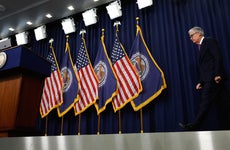
Take these 12 steps as the Federal Reserve keeps interest rates high
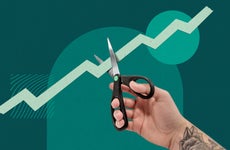
When will the Fed cut interest rates? Experts say later this year, if at all – here’s why
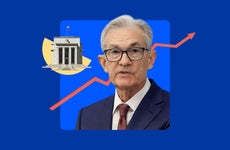
What is the federal funds rate? How the Fed controls interest rates, explained
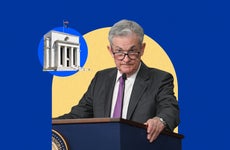
Will stubborn inflation force the Fed to raise interest rates again?